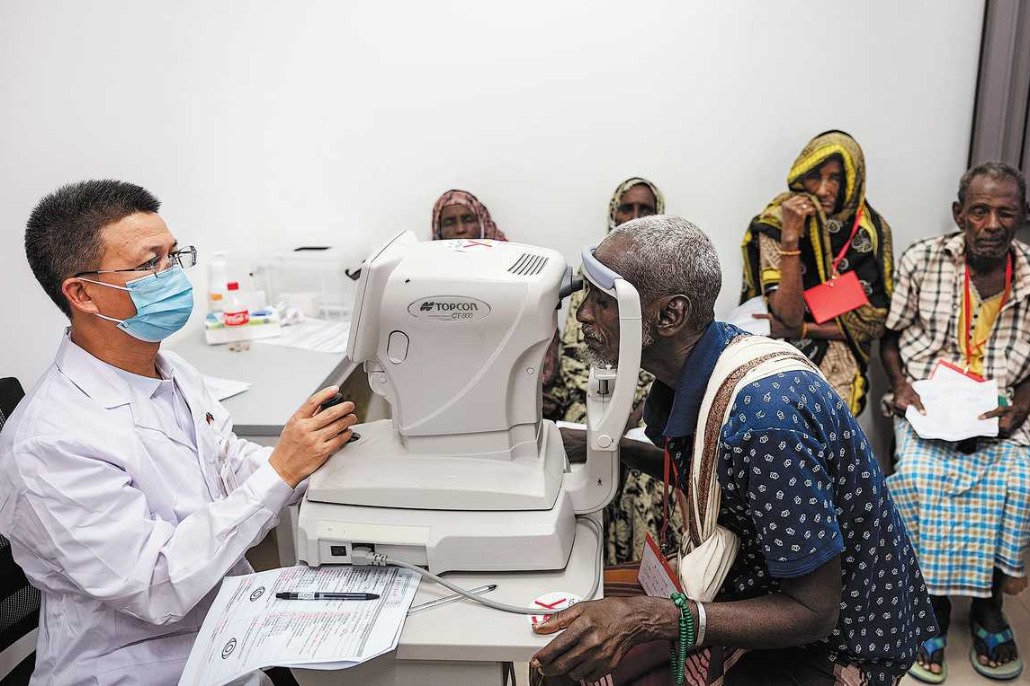China's policy support to boost 2024 recovery
By Robin Xing | CHINA DAILY | Updated: 2024-01-16 06:44

The Chinese economy emerged from the shadows of the COVID-19 pandemic in 2023, with its GDP growth accelerating to 5.1 percent from 3 percent in 2022, led by household consumption. Yet the economy is likely to continue grappling with structural challenges of debt, demographics and low inflation, although we (at Morgan Stanley) believe that more decisive policy support is likely to boost the recovery path in 2024.
Economic growth mix of the year
Reflecting the recovery in labor-intensive services, disposable income growth likely outpaced GDP growth in 2023, a trend we believe will continue in 2024. Private consumption will thus remain a major contributor to GDP growth.
As household consumption appetite is on a path of normalization, with National Bureau of Statistics data showing households unleashed some excess savings in the third quarter of 2023, the first time since the pandemic, we expect private consumption growth to remain at a robust 5 percent year-on-year in 2024.
Fixed capital formation is likely to rise at a modest 3.2 percent year-on-year, similar to 2023, and infrastructure investment is expected to remain resilient amid a higher central government budget (specifically the increase in the budget by 1 trillion yuan-$140.13 billion — in late 2023) and quota for local government special bonds, partly offsetting the tightening of net financing among local government financing vehicles (LGFVs).
This year could also see the further contraction of property investment, albeit at a slightly slower pace after two and a half years of sharp adjustment. The "three major projects" — rural vitalization, social housing construction, and building public infrastructure for normal and emergency use — are likely to provide a floor for the property market via quasi-fiscal support from the People's Bank of China, the country's central bank.
Finally, external demand is likely to rebound from the trough in 2023 thanks to a global tech up-cycle, competitiveness in the green supply chains, and global consumer demand amid resilient real income growth. We also expect China's trade-able sector to weather the headwind of supply chain "de-risking" by maintaining pragmatic economic relations with key trading partners, as well as resilient outward direct investment by China's emerging multinational manufacturers.
Reflation path likely to be gradual
The shadow of low inflation still looms over the economy, though, with the GDP deflator remaining negative for three consecutive quarters up to the fourth quarter of 2023, the longest stretch since 1998-2000.
At its core, low inflation is a reflection of weaker aggregate demand relative to supply amid housing and LGFV deleveraging. Indeed, economic activity appears to have decelerated toward the end of last year, with the official manufacturing purchasing managers' index remaining below 50 for the third consecutive month, reaching a six-month low. The services PMI, too, dipped into contraction territory in November 2023 and remained flat in December for the first time since December 2022.
Experience shows reflation and smooth deleveraging often require more debt initially to support aggregate demand and anchor inflation expectations. Policymakers in turn ramped up fiscal support with the mid-year budget expansion, and we see further coordinated fiscal and monetary easing in 2024.
The augmented fiscal deficit may expand by 1.5 percentage points of GDP, cushioning tightening effects of housing and LGFV deleveraging (the two segments have combined debt-to-GDP of about 100 percent). Even though the initial fiscal package to be announced during the National People's Congress in a couple of months could be modest, additional easing could be prompted as growth is likely to fall below the official target in the first half of the year.
Also, the PBOC is likely to implement two 25 basis point reserve requirement ratio cuts and a cumulative 20 basis point policy rate cut this year to maintain sufficient liquidity and accommodate fiscal stimulus. That said, the reactive nature of policy response means that the reflation path is likely to be gradual.
We expect the GDP deflator to pick up mildly this year, to 0.5 percent from-0.9 percent last year, marking the first step toward a more optimal inflation environment. We believe a GDP deflator of 2-3 percent is not only implied by the longstanding official inflation target but also necessary to ensure more moderate levels of real interest rates, improve corporate profitability and revive private investment and wage growth.
Reaching the aforementioned optimal inflation in a sustained manner requires decisive fiscal easing and rebalancing. We believe a"5R" macro policy package — reflate, rebalance toward consumption, restructure the troubled balance sheets, reform the public sector, and rekindle the private sector's animal spirit — will be needed to break the spiral of low inflation and rising leverage. The overall progress for implementing this"5R strategy" was about 25 percent in 2023. We expect it to reach 50 percent by year end, led by reflation and restructuring, in line with a gradual reflation outlook.
Property sector needs to improve liquidity situation
The property sector remains at the center of China's economic challenges. Granted, the direct drag from housing activities may become more moderate as investment in housing as a percentage of GDP has fallen sharply from 9 percent in 2021 to about 6 percent, and housing sales have declined by one-third compared with the peak level. However, the spillover effects, such as difficulties for suppliers and contractors, investment losses in wealth management products, and negative wealth effect due to lower housing prices, could become more pervasive.
For the government, the ongoing social housing construction and rural vitalization plans are indirect ways of supporting the property sector by digesting inventory and improving realty developers' liquidity situation so they can complete the construction of unfinished homes. This would in turn appeal to homebuyers' sentiment, which would be conducive to restoring the positive circulation in the property market.
But if the aforementioned non-linear transmission channels emerge and widen, it would dampen the policy multiplier and deepen the downward feedback loop between macroeconomic conditions and the property market, requiring a larger stimulus to keep the economy on a recovery path. Moreover, more explicit support to property developers might be necessitated to prevent another round of confidence deficit in their ability to deliver presold homes.
China's economy has reached a critical juncture. We see room for more decisive policy easing and faster economic rebalancing to support growth while tackling excesses from credit-fueled growth in the past. With a proper policy mix, we see a two- to three-year reflation journey, lifting the country to the level of a high-income economy by 2027.
The author is chief China economist at Morgan Stanley.
The views don't necessarily reflect those of China Daily.
If you have a specific expertise, or would like to share your thought about our stories, then send us your writings at opinion@chinadaily.com.cn, and comment@chinadaily.com.cn.
























